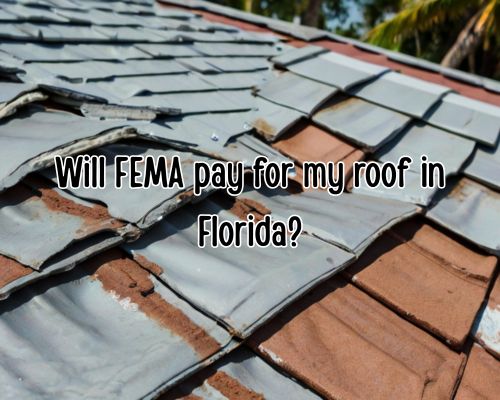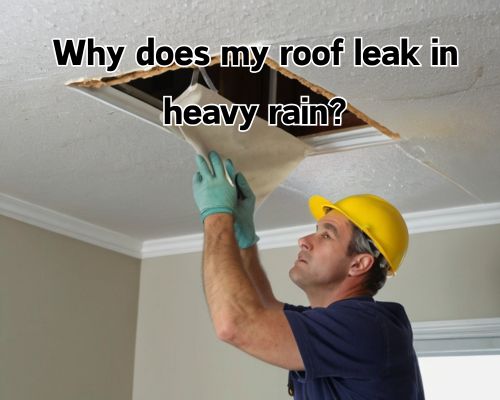Where Would Be the Best Place to Look for a Roof Leak in West Palm Beach, Florida?
Where Would Be the Best Place to Look for a Roof Leak in West Palm Beach, Florida?
If you’ve ever experienced a sudden downpour in West Palm Beach, Florida, only to find water stains creeping along your ceiling, you’re likely dealing with a roof leak. Florida’s humid, hurricane-prone climate makes homes more susceptible to roofing issues, and early detection of leaks can prevent costly repairs. But where should you begin your search? With David Spade of Star Roofing, this guide explores the best places to inspect for a roof leak and offers professional insights tailored to West Palm Beach homeowners.

Common Entry Points for Roof Leaks
Water can infiltrate a roof through various weak points, and knowing where to look first can save time and money. Here are the most common areas where leaks tend to originate:
1. Roof Valleys and Low Points
Roof valleys, where two slopes meet, are prime areas for water collection. If shingles are loose or improperly sealed in these valleys, rainwater can seep through. In West Palm Beach, heavy storms frequently stress these weak points, making regular inspections essential.
2. Flashing Around Vents, Chimneys, and Skylights
Metal flashing is designed to seal areas where the roof meets vents, chimneys, or skylights. However, Florida’s high humidity can cause flashing to corrode or pull away, allowing water intrusion. Be sure to check for cracked, missing, or rusted flashing, especially after a tropical storm.
3. Roof Shingles and Tiles
Loose, cracked, or missing shingles are clear indicators of a potential leak. The intense sun and heat in West Palm Beach can weaken asphalt shingles over time, leading to warping or curling. If you notice shingles that appear out of place, they may be the cause of the leak.
4. Gutters and Downspouts
Clogged or misaligned gutters can cause water to pool along the roof’s edge, leading to leaks. Debris buildup from palm fronds and other vegetation common in Florida can exacerbate the problem. Cleaning gutters regularly can prevent water from backing up under the roofing materials.
5. Roof Eaves and Soffits
Water can often find its way into a home through the soffit—the underside of the roof’s overhang. In West Palm Beach, where wind-driven rain is common, water may push up under the eaves and penetrate the attic. Inspecting these areas for moisture damage or peeling paint is crucial.
6. Attic and Ceiling Inspections
Sometimes, the best way to identify a leak is from inside the home. Check the attic during or after a rainstorm for damp insulation, dark stains, or visible drips. Ceiling water spots and mold growth can also indicate a slow, persistent leak that needs immediate attention.
How West Palm Beach’s Climate Impacts Roof Leaks
The climate in West Palm Beach significantly affects roofing materials and leak susceptibility. Here’s how:
- High Humidity and Rainfall: Moisture accumulation can lead to mold and mildew growth, which weakens the roofing structure over time.
- Hurricane Season: Strong winds and heavy rains often cause roofing materials to lift or tear off completely, leading to leaks.
- Salt Air Exposure: Coastal homes face additional challenges as salt air accelerates metal corrosion, particularly on flashing and fasteners.
- Intense Sun Exposure: Prolonged UV radiation causes roofing materials to degrade faster, increasing the likelihood of cracks and gaps.
Preventative Maintenance for West Palm Beach Homeowners
To avoid major roofing issues, homeowners should adopt a proactive approach. Here are some best practices for maintaining a leak-free roof:
- Schedule Regular Roof Inspections – A professional roofing contractor in West Palm Beach should inspect your roof at least once a year.
- Trim Overhanging Trees – Palm trees and other large vegetation can drop debris onto your roof, leading to clogged gutters and eventual leaks.
- Check After Storms – After a hurricane or heavy rainfall, visually inspect your roof for signs of damage or displaced shingles.
- Clean Your Gutters – Ensure proper drainage to prevent water pooling and damage to roofing materials.
- Seal and Waterproof – Applying a high-quality sealant can help protect against the region’s heavy rainfall and humidity.
When to Call a Professional Roofing Contractor
If you discover a leak but aren’t sure about the severity, it’s best to call a licensed roofing contractor in West Palm Beach. Professional roofers can perform a thorough inspection, locate hidden leaks, and provide solutions tailored to Florida’s unique weather challenges.
Conclusion
Detecting a roof leak early can prevent costly repairs and structural damage. By inspecting common problem areas like roof valleys, flashing, and gutters—and understanding how West Palm Beach’s climate impacts roofing—you can protect your home from water damage. Regular maintenance and professional inspections especially with Star Roofing ensure that your roof remains in top condition, providing peace of mind even during Florida’s stormiest seasons. If you suspect a roof leak, act quickly and consult a trusted roofing expert to safeguard your home.

